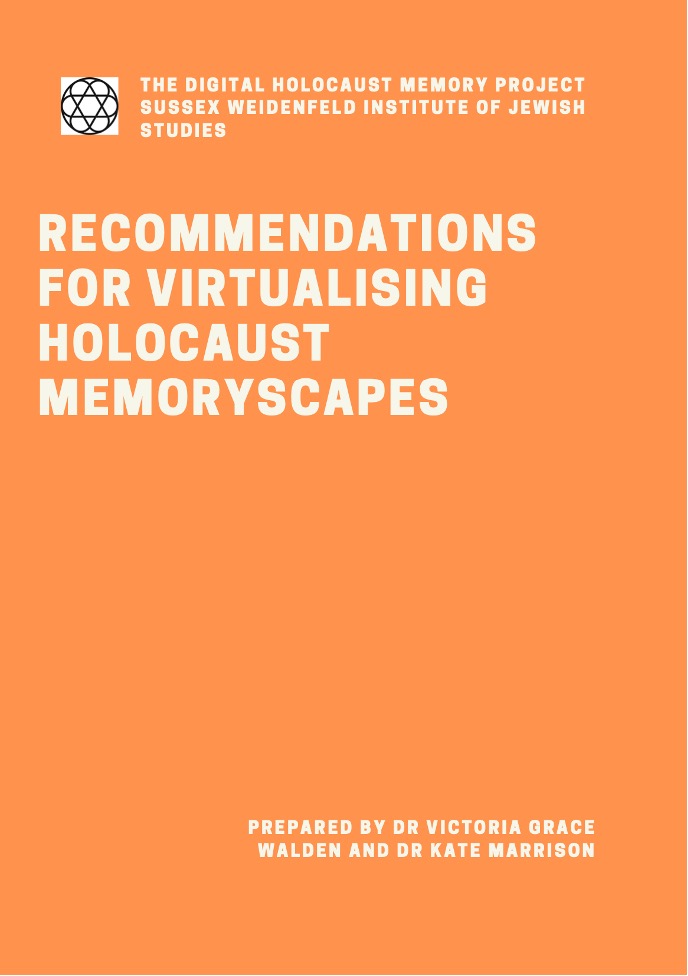
Recommendations for Virtualising Holocaust Memoryscapes
The recommendation reports, published as part of the Digital Holocaust Memory Project, underpin the objectives of the Landecker Digital Memory Lab. Their findings feed into all of the work that we now do.
Foreword
Virtual reality and augmented reality experiences play an increasingly significant role in Holocaust memory and education as professional memory institutions continue to explore the affordances of integrating digital technologies into visitor and user experience. There is a rapidly expanding list of projects experimenting with cinematic virtual reality, photogrammetry, digital mapping, 3D modelling, 360-degree on-location survivor testimony as well as a growing portfolio of augmented and mixed reality mobile and tablet applications.
Principally being implemented as spatial technologies, several memorial sites and museums are exploring the possibilities of creating 3D graphic reconstructions of former sites of Nazi persecution in AR/VR such as the digital reconstruction of Falstad Concentration Camp, the Here: Spaces for Memory App at the Bergen-Belsen Memorial Site, the Sobibor AR exhibit, the project Auschwitz VR as well as the 360-degrees-walks at Neuengamme Concentration Camp Memorial. Going further, some digital initiatives are using VR/AR/MR technologies to zoom in on historical documents, testimonies and artefacts, notable projects include the ARt AR App at the Dachau Memorial Site and Museum which revivifies historical and contemporary drawings and paintings in-situ at the present-day site, the Anne Frank House VR which invites visitors to navigate the annex through a series of digital objects, and The Last Goodbye VR experience which foregrounds survivor testimony within Majdanek, the similarly survivor-driven Walk with Me at The Melbourne Holocaust Museum and numerous films that shape the Illinois Holocaust Museum and Education Center’s The Journey Back exhibition space.
While it is important to note that VR technology is not new and has existed for more than 30 years, it is only recently that the technology has become more widely accessible in the heritage and museum sectors (in part, due to the affordability of headsets and devices in the domestic market). The proliferation of VR and AR projects within the sector, then, raises critical questions regards the opportunities for digital Holocaust memory practice and education while also bringing to the fore issues of curation, contextualisation, visitor experience and accessibility.
This report serves as an important first step in this work. It was created as part of the research project ‘Participatory Workshops – Co-Designing Standards for Digital Interventions in Holocaust Memory and Education’, which is one thread of the larger Digital Holocaust Memory Project at the University of Sussex. The participatory workshops project have focused on six themes, each of which brought together a different range of expertise to discuss current challenges and consider possible recommendations for the future.
The themes were:
- AI and machine learning
- Digitising material evidence
- Recording, recirculating and remixing testimony
- Social media
- Virtual memoryscapes
- Computer games
Download the full report below: